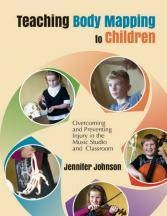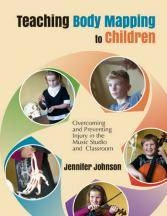Opens in a new window
GIA Publications Teaching Body Mapping to Children - Johnson - Book

- Composer/Author: JOHNSON, JENNIFER
- Instrumentation: CLASSROOM
- Model # G-9229
Format: Book
Version: Classroom Materials
Does your student have unexplained arm pain when playing violin? Does a beginner in your band complain of a sore neck and shortness of breath when playing clarinet? Or does your piano student complain of sore wrists?
Expanding on the concepts of Body Mapping developed by Barbara Conable in her flagship book, What Every Musician Needs to Know about the Body, licensed Andover Educator Jennifer Johnson presents anatomical facts, movement activities, and tools for preventing injury in our young music students.
Teaching Body Mapping to Children is an essential guide for teachers to recognize potential movement and posture problems and to help their students find free, healthy, and efficient ways to make music.
Clear definitions and useful drawings illustrate the structure of the body and healthy movement patterns. Imaginative games and activities for both individual and group instruction teach musically appropriate movement and self-awareness. Suggestions for using anatomically accurate teaching language are provided. Also addressed are the challenges that daily activities (such as texting, writing, and using a computer) present to the well- being of our students. A comprehensive list of resources adds to the value of the book.
Q & A
There are currently no questions for this product.
Reviews
There are currently no reviews for this product. Be the first to write one!





